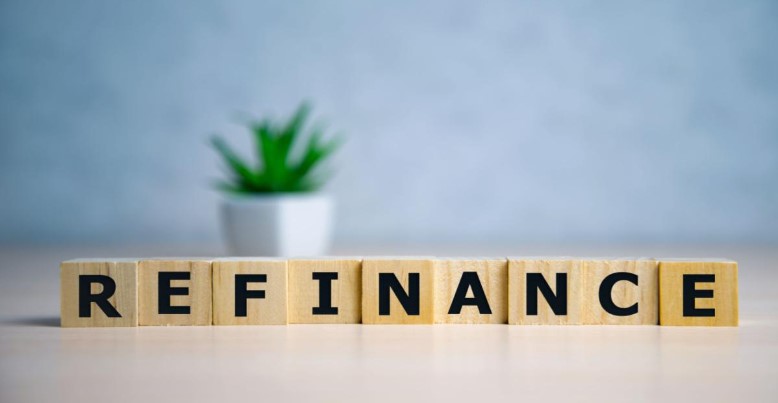

If you are thinking about refinancing your housing loan, it may be a good idea to do it sooner than later. Recent trends show that both national and global uncertainty is driving a surge in interest rates (IRs) after the historic lows in the past couple of years. Experts suggest that the average housing debenture rate could hit five percent sooner or later – so the time to compare financial institutions is now.
But refinancing the house takes a lot of finesse, especially in a world where interest rates are rising drastically. During the economic downturn because of the COVID-19 pandemic, IRs were at record lows. Remortgaging a house was a no-brainer for property owners, according to experts. It is not a bad idea to consider it at that time. But what about after the COVID-19 pandemic?
Remortgaging can be onerous, and there is a good chance that it can’t save property owners a lot of money in the end. But a well-planned refi or refinance can help people tap into their property’s equity, free up some funds, or adjust their debenture terms to one that fits their current financial situation. So, is remortgaging the right move for you? Here is how to know, as well as steps people need to take if they decide to remortgage.
To know more about mortgages, click here for more info.
Refinancing a mortgage
Remortgaging is when homeowners take out a mortgage to replace their existing home loan. The new debenture can be taken out with their current lending firm or a different financial institution. Property owners usually refinance to take advantage of much better IRs or a more favorable one that suits their needs.
How to refinance a housing loan
Remortgaging is a pretty simple process – according to theory. It means taking out new credits to pay off the current one, either with the current financial institution or a new lending firm. Most property owners refi to take advantage of low-interest rates, but sometimes it is about changing the debenture terms and conditions, freezing up the equity in a house to use for other purposes like paying off debts or paying for college, or getting rid of housing loan insurance.
Average refi rates have risen drastically from historic lows because of the COVID-19 pandemic and the year after. However, people may still be able to get a good or advantageous rate by snooping around with different lending institutions.
Some individuals may also qualify for better IR compared to when they first applied for a housing debenture. But qualification happens depending on the borrower, and every financial institution has a different set of requirements. Here is an overview of the housing loan refi process and the steps people need to follow for successful remortgaging.
Set financial goals
The first thing people need to do is to take a closer look at their budget and finances. They need to consider what they are hoping to accomplish with their refi. There are four reasons people do this thing:
To lower the IR on their home credit, increasing their monthly cash flow. It can be pretty helpful and redirect monthly cash flows into other areas that are much needed at the moment.
Shortening the debenture term, for instance, from thirty to twenty years, can save a lot of interest over time.
It is called cash-out refinance to take the money from the refi and use the equity they have in their house to consolidate multiple debts, make home improvements, or pay for college.
To change their debenture from adjustable-rate mortgages to fixed-rate ones.
People should think about what they are hoping to gain from their refi and share that when people talk with mortgage brokers or bankers so they can understand what kind of refi might make the most sense for them.
Homeowners need to find out how much home equity they have
Home equity is an important part of the puzzle when it comes to deciding if it is worth refinancing a house. The amount of home equity is calculated as the difference between the current value of the house in the market and the remaining balance on the home debenture.
For example, if a property is worth three hundred thousand dollars and the owner has paid two hundred thousand dollars on their home credit that leaves them with a mortgage of one hundred thousand dollars. In this case, the owner could choose to refi and take out a new debenture for the one hundred thousand dollars, thereby possibly qualifying for lower IRs and lower monthly amortization.
Lending firms usually use what is called LTV or Loan-to-Value ratio calculation to find out whether a property owner can refi their home debenture and how much of their home equity they can cash out. The calculation is also very important when it comes to determining whether they can take out a HEL or Home Equity Loan.
Loan-to-Value ratio is calculated by dividing the borrowed amount by the home’s value. In the example mentioned above, the Loan-to-Value ratio would be thirty-three percent. To know more about this topic, check out sites like billån refinansiering businessfig.com for more info.
Gather all important documentation
Experts’ advice to individuals wanting to refi is pretty simple: they should not come empty-handed and be prepared. People should collect their financial documents and have these things ready for lending firms. The documents they will most likely need to get a refi to include:
- Bank statements
- Homeowners insurance plans
- Proof of income, such as pay stubs
- Tax documents like tax returns, 1099s, and W-2s
- Statement of debts like student debentures, car debentures, mortgages, and any lines of credit
- Documents of assets like 401K, closing disclosures, bonds, stocks, and savings
- Copy of their title insurance
People should also check their credit reports and score to get a sense of where they stand. They need to get a copy of their free report. Most financial institutions, credit unions, or online lending firms will let individuals see their scores for free in their accounts.
Look around and compare different rates
People can look around and compare multiple refi rates on the Internet without stepping foot into their bank’s physical branch. Whether they are a new financial institution or a home debenture broker they have worked with before, they should pick the one they trust.
Homeowners should snoop around and compare different offers from multiple lending firms to make sure they are getting the best deal possible. The Federal Reserve Board or FRB provides a handy loan refi shopping list with question people can ask every financial institution. It is worth it to do tons of research, but be aware of low advertised debenture rates.
Depending on the person’s credit history, they may not qualify for what they found. In addition, an advertised rate may sometimes have hidden charges or terms attached to it, or housing debenture points factored into its calculations. Some people prefer using mortgage brokers. These professionals act as liaison officers between clients and lending firms. Most mortgage brokers work on commission – usually paid by the lending institution – and will shop for financial institutions and rates on the client’s behalf.
Apply with different lending firms
According to professionals, homeowners do not need to limit themselves to one possible broker or financial institution when they are submitting their applications. They need to consider talking with different brokers and lending firms. There is an excellent number of financial institutions to speak with and get debenture estimates from. The advice is pretty important if the person’s credit score is not as good as it should be.
Every financial institution has its own requirements and criteria when it comes to determining who to lend money to. If one lender turns them down because of their score, debt-to-income ratio, income, or cash flow, others may not. They may also find rates at other lenders to be better, but the only way to know which financial institution best fits their needs is by applying to multiple service providers.








